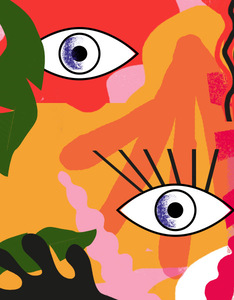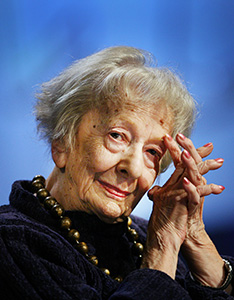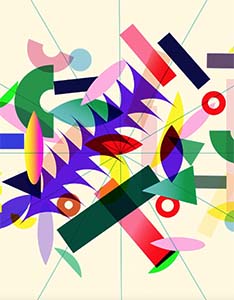Joanna Hawrot’s “Visible Futures” exhibition at Art Basel Paris 2025
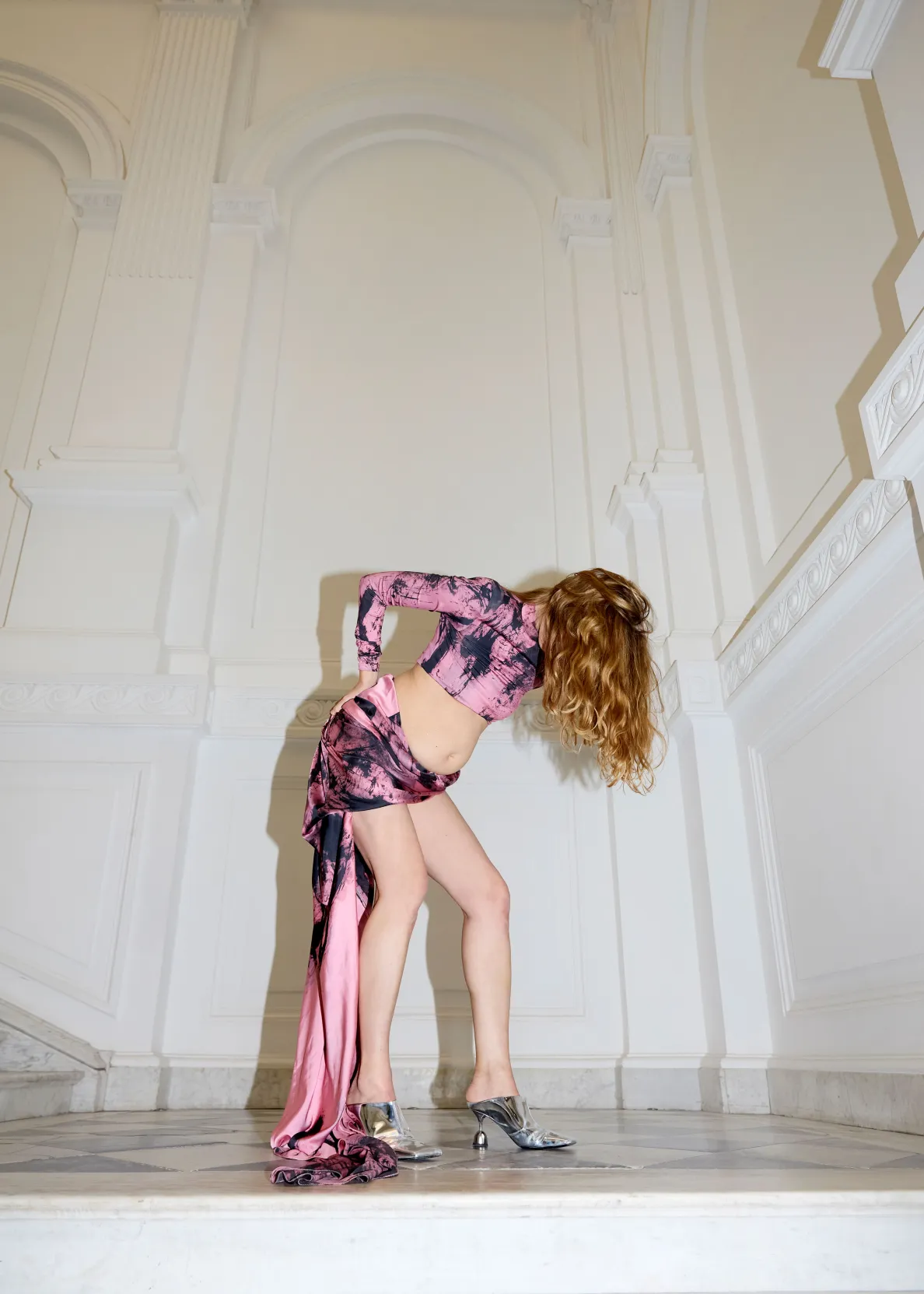
Joanna Hawrot’s textiles, Angelika Markul’s sculptures, Zuza Krajewska’s photographs, and Ramona Nagabczyńska’s performance together make up the “Visible Futures” exhibition, which will be on display at the historic gallery spaces of Maison Markul in Paris from 24 to 26 October 2025. Shown at Art Basel Paris, the artistic project tells the story of experiencing motherhood and birth, and looks at how we talk about the female body, visibility, and the need for self-expression today.
“Visible Futures” is an extension of the project “Wearable Art – Unseen Threads” presented for the first time at Daimaru Shinsaibashi in Osaka, organised by the Adam Mickiewicz Institute and financed by the Ministry of Culture and National Heritage as part of the cultural programme accompanying Poland’s participation in the EXPO 2025 World Exhibition organised by the Polish Investment and Trade Agency.
Joanna Hawrot’s new exhibition at the intimate gallery Maison Markul in Paris
The success of the “Wearable Art – Unseen Threads” exhibition in Osaka has resulted in another show of works by Joanna Hawrot, this time at the Maison Markul gallery in Paris which invited her to present her art at Art Basel Paris 2025.
The exhibition “Visible Futures” reaches out to different forms of expression to convey the experience of motherhood, birth, and delivery itself in a new way. Joanna Hawrot designed fabrics inspired by the works of Wojciech Sadley and invited female artists to explore and interpret this unique experience with her.
Works presented as part of “Visible Futures” do not serve as decorations, but become a record and transmission of an experience. Patterns, cuts, and movements of the bodies build a semantic structure in which garments reveal the tensions between individual memory and communal history. Angelika Markul’s sculptures endow this dynamic with a burden of material presence, while Zuza Krajewska’s photographs reinforce the relational nature of the project, as they not so much record but co-create the image.
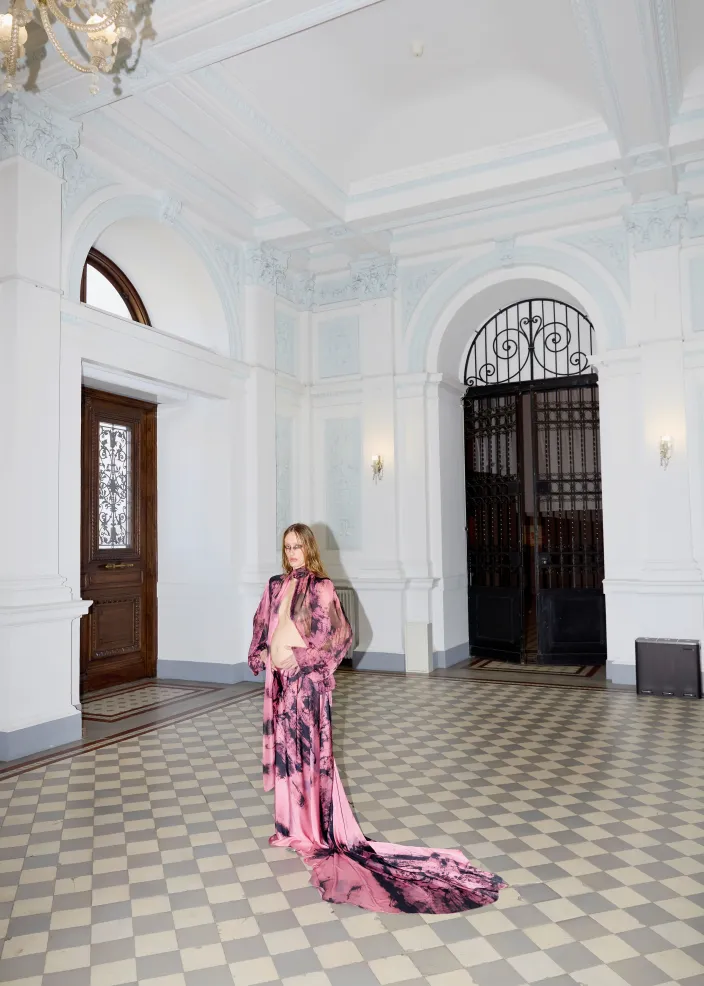
The exhibition in Paris will open with Ramona Nagabczyńska’s performance “Bliss”, which brings to the project the experience of a body in a state of transition – between pain, energy, and a sense of beginning. “Bliss” shows that corporeality and the future are inextricably linked – the body is the first place where the future is created. Joanna Hawrot designed special costumes for the performer, drawing inspiration from Wojciech Sadley’s works from the collection of the Central Museum of Textiles in Łódź. The colour scheme, dominated by powder pink and black, refers to the interior of the female body, while the watercolour, woodcut-like black spots allude to Japanese woodcuts, to which the artist likes to return in her work.
This time the costumes are very close to the skin, because the dress is an extension of the performer’s body, as it in a sense flows out of her – says Joanna Hawrot.
Another medium that makes up the multidimensional story spun by “Visible Futures”, is photography. An exhibition of photographs taken by Zuzanna Krajewska is integrated into the Maison Markul’s space. The photos show Ramona Nagabczyńska wearing costumes designed by Joanna Hawrot in the setting of the Zachęta National Art Gallery in Warsaw. The photographer’s works – as Hawrot intended – correspond with Joanna Fluder’s “Slime” exhibition.
From Polish textile tradition to Japanese court costume
The motto of the project are the words of Audre Lorde: “Your silence will not protect you” (The Transformation of Silence into Language and Action), which help place it in a broader, universal perspective.
“Visible Futures” proposes a polyvocal process – a meeting of matter, image, and body, in which visibility becomes a causal act. The accompanying words of Audre Lorde remind us that the future requires action and form. The Paris presentation takes just such a form: clear and attentive, directed toward what is just being constituted – explains Dr Paweł Pachciarek, curator of the project.
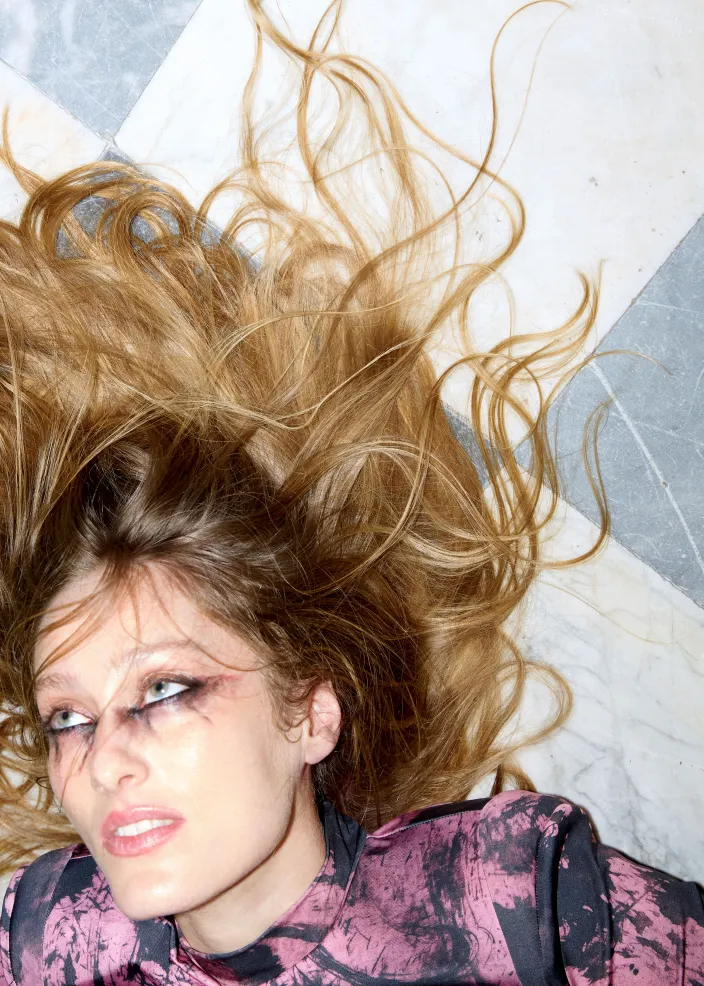
Another point of reference is also the tradition of jūnihitoe, the multi-layered attire of the Japanese court, in which each layer has its own significance. In “Visible Futures”, this practice becomes a narrative method: layers function as levels of time and meaning, allowing past, present, and possible futures to coexist and condition one other. A new figure is inscribed into this structure – a woman-mother. Her presence introduces a dimension of beginning and viable future. She participates in the process, bringing a change of scale, pace, and sensitivity, directing attention away from retrospection toward what is just taking shape.
However, Joanna Hawrot’s textile works, both the ones already presented in Osaka as well as brand new ones shown in Paris, stem from the tradition of the Polish School of Textiles and consciously refer to the most famous Polish artist in this field – Magdalena Abakanowicz.
Magdalena Abakanowicz’s work returns to Paris after more than 40 years
“Visible Futures” will be a kind of a prelude to the first retrospective exhibition devoted to Magdalena Abakanowicz in France.
As early as on 20 November 2025, the first such large monographic exhibition of Magdalena Abakanowicz “La trame de l'existence” / “The fabric of existence” will open at the Musée Bourdelle in Paris, restoring the artist to her rightful place among the great sculptors and sculptresses of the 20th century. The Musée Bourdelle offers a chance to look at the artist’s work from the perspective of her biography and political involvement, presenting a broad overview of her work: more than 80 monumental sculptures, textile works, drawings, and photographs.
The exhibition is a result of cooperation between the Marta Magdalena Abakanowicz-Kosmowska and Jan Kosmowski Foundation, the Adam Mickiewicz Institute, and the Polish Institute in Paris.
